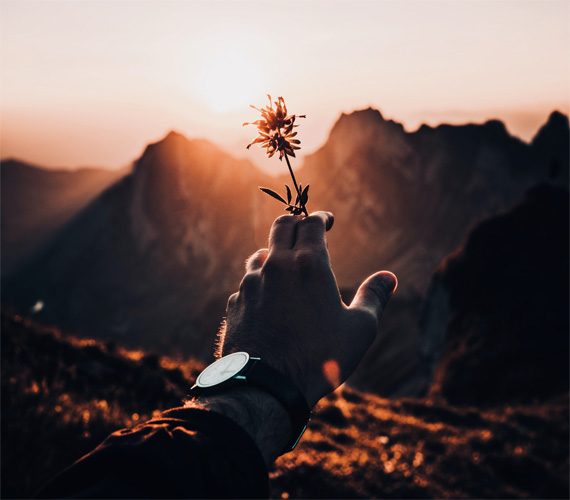You take hundreds and thousands of photos of this, that, and everything around you. Your main objective? To capture beauty.
But, when you come home and take a look at your photos, why is there so often a feeling of dissatisfaction? Why do the photos you take not come out how you imagined they would?
While there are many reasons for this, let me share with you one common mistake that you may suffer from.
It all starts with your eyes…and how you use them.

Photo by Alex Alvarez; ISO 400, f/1.2, 1/8000s.
Helen Keller was once asked how she could accomplish so much without her vision. Her response? She completely disagreed and said she did have vision. In fact, her vision is what she attributed to every one of her accomplishments. Without it, she would not have accomplished anything.
Vision, you see, is more than just opening your eyes and looking around for things to see. It’s the very essence of what it means to be an artist.
As a photographer, vision is everything.
So what exactly is vision and how do you develop it? To start, there are two critical parts to your artistic “vision”:
1. What are you trying to capture?
So many camera owners see something interesting and then shoot away. When you work this way, you may know what you are trying to photograph, but do you really? Did you really carefully study the way it looks from your viewfinder? Did you really take time to find the best way to capture it?
Or, did you just see it, point your camera at it, and SHOOT SHOOT SHOOT?
The fact is, once you’ve found what you want to capture, the photography process barely even BEGINS!
Instead of rushing away to press down on your shutter, take time to observe. Carefully look at the scene in front of you. The colors. The shapes. The contrasts.

Photo by Luke Jones; ISO 100, f/1.8, 1/4000s.
Now’s your chance to frame your composition and inject YOUR viewpoint and YOUR vision.
Which leads to point number two….
2. Emotion
To describe this, let me first ask you to do something. Please, at night, walk around a neighborhood with a lot of apartments. This will allow you to easily see the windows of several apartments at the same time.
I want you to carefully notice the flickering of light in nearly every single window. What’s happening? Everyone is glued to some sort of screen watching something. Netflix. Cable TV. A movie….
Now, why is this happening?
It’s not because people like to sit on a couch and do nothing for several hours. It’s not because people enjoy staring at a frame.
Quite frankly, it’s because within every single TV frame is the most addicting substance on the face of the earth: EMOTION.
Drama. Excitement. Happiness. It’s all packed into that frame for easy and quick absorption from viewers. THIS is what people enjoy. THIS is what people thrive on. If they stumble onto a channel without emotion, they will quickly move on without a second thought.
A photo works no differently.
It’s simply a frame jam-packed with emotion. Unlike movies, however, a photo has only one shot to grab its viewers. Because of this, you must smack the viewer over the head with a powerful emotional experience the very moment they lay their eyes on your image.

Photo by Ayko Neil Kehl; ISO 80, f/5.6, 1/100s.
If you don’t, you’ve lost your viewer.
Your vision must always be emotion-based.
We all know the basic emotions. Happy, sad, mad, angry, frustration, peace, relaxation, etc. When you have found the subject you want to photograph, try thinking of these emotions.
What emotion do you want your subject to feel?
Your answer to this question will help you determine what angle you choose. It will help you determine whether to put a lot of space (or a little) around the subject. It will help you determine whether to use a vertical or horizontal orientation.
It will, in essence, help you determine every aspect of your photo. The more you engineer your photo to present that emotion, the more power it will have.
So there you have it! Two critical parts to your “vision” as a photographer. Try thinking of both of these elements every time you take a photo and I guarantee you’ll see a change. And remember, when you’ve found a breathtaking subject to capture, your job as a photographer has just begun. Hold off the urge to instantly shoot away and instead, observe first!
About the Author:
Simon Takk, creator of phototechniques, shows others how to open their eyes to the breathtaking photo opportunities all around them.
Like This Article?
Don't Miss The Next One!
Join over 100,000 photographers of all experience levels who receive our free photography tips and articles to stay current:






I read this article three times. And it still teaches a lot. I find myself in what it describes and I can tell, every time I implement this way of acting, I end up with astonishing pictures. The downside is when taking portrait pictures it is more difficult to have this emotion from the model.
Wow, this is probably the most insightful article on photography I’ve ever read. All the gear and science and tutorials in the world are meaningless without ‘vision’.